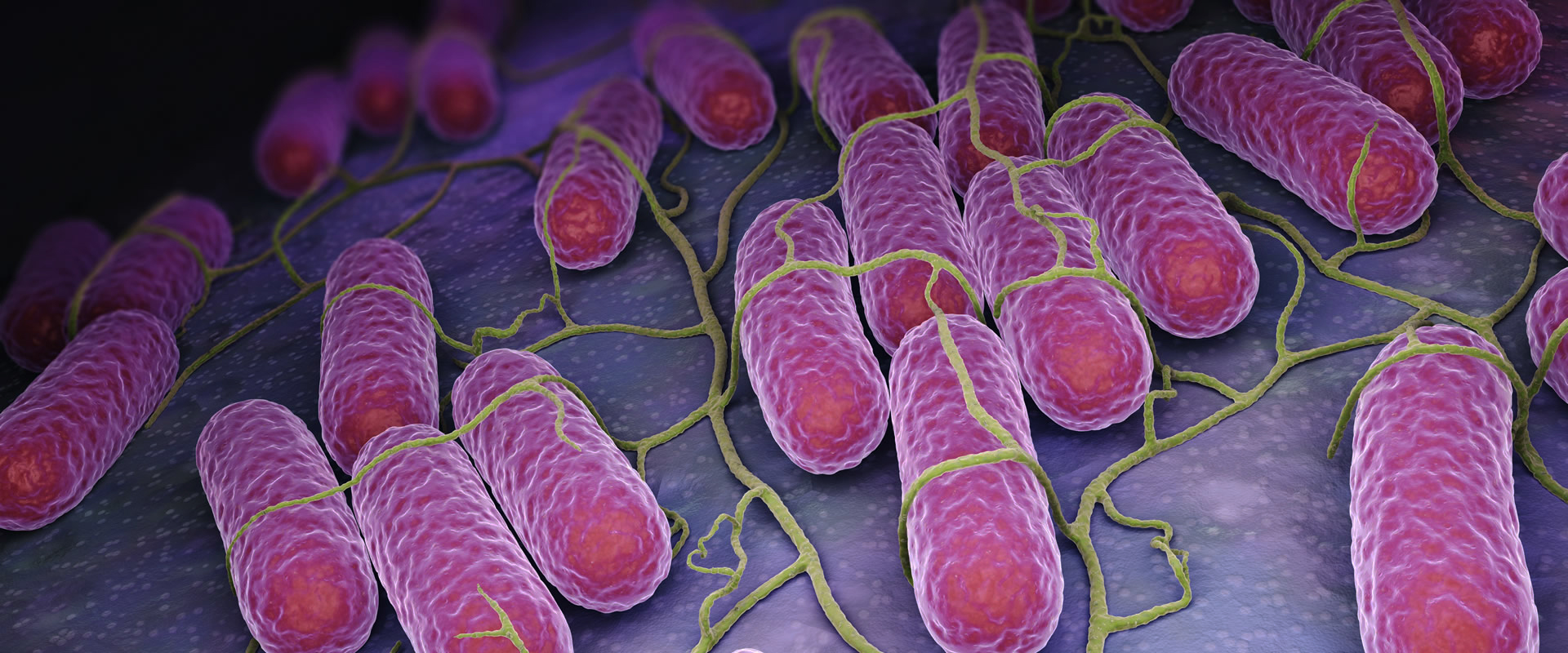
Science Overview
Lakewood-Amedex discovered a new class of antibiotics, BisphosphocinsTM, as part of a research program to target bacterial RNA. The compounds are novel, small nucleotide derivatives that exert their antibacterial activity by targeting the bacterial cell membranes, causing rapid bacterial cell death. Preclinical studies have demonstrated efficacy against 250 different bacterial strains, including all the ESKAPE pathogens (Staphylococcus aureus, Klebsiella pneumoniae, Acinetobacter baumannii, Pseudomonas aeruginosa, and Enterobacter spp.) biodefense pathogens, and clinically isolated bacterial strains such as Methicillin-resistant Staphylococcus aureus (MRSA) and Methicillin-sensitive Staphylococcus aureus (MSSA). (See Figure for additional examples of susceptible bacteria and fungi).
BisphosphocinsTM are Extremely Broad-Spectrum Antimicrobials
Nosocomial Infections
Acinetobacter iwoffii – clinical isolate
Acinetobacter baumannii – clinical isolate
Clostridium difficile – multi-resistant
Enterococcus faecalis – W.T. & vancomycin resistant
Enterococcus faecium – vancomycin resistant
Klebsiella pneumoniae– clinical isolate, NDM-1
Pseudomonas aeruginosa – W.T.
Pseudomonas aeruginosa –ciprofloxacin, MDR
Serratia marcescens – oxacillin resistant
Staphylococcus aureus (MRSA) – vancomycin
Staphylococcus epidermis – oxacillin resistant
Community Acquired Infection
Aeromonas hydrophilia – clinical isolate
Alcaligenes faecalis – clinical isolate
Borrelia burgdorferi
Haemophilus influenzae
Mycobacterium tuberculosis – WT, MDR
Moraxella catarrhalis
Neisseria meningitidis – rifampicin resistant
Propionibacterium acnes
Proteus mirabilis
Streptococcus pneumoniae – penicillin resistant
Biodefense
Bacillus anthracis
Brucella abortus
Burkholderia mallei
Burkholderia pseudomallei
Francisella tularensis
Yersinia pestis
Food Borne Pathogens
Escherichia coli – ampicillin resistant. NDM-1
Salmonella choleraesuis (enterica)
Salmonella typhimurium – streptomycin resistant
Fungal Pathogens
Trichophyton rubrum and mentagrophytes
Microsporum gypseum
Aspergillus fumigatus
Due to the nature of the rapid bactericidal action and short half-life, challenged bacteria have been unable to develop resistance to BisphosphocinsTM. For example, serial passage of MRSA in the presence of BisphosphocinsTM Nu-2 at sub-inhibitory concentrations (0.1x minimum inhibitory concentration (MIC) and 0.2x MIC) failed to generate any detectable change in the MIC out to 30 days, whereas the same bacteria demonstrated resistance to ampicillin after only one day. In general, quiescent bacterial populations were less sensitive to existing antibiotics, whereas BisphosphocinsTM were equally effective against growing and dormant bacteria. The novel mechanism of action, rapid killing, and lack of drug resistance make the BisphosphocinsTM ideal candidates to respond to future pandemic threats.
Preclinical efficacy studies in animals have shown that BisphosphocinsTM are safe and efficacious against a broad range of bacterial infections, including most multidrug-resistant pathogens, dramatically depopulating infection sites within short exposure times. In vitro biochemical analysis by independent laboratories has confirmed that the bactericidal activity of BisphosphocinsTM is mediated by rupture of the negatively charged bacterial cell membrane, with no effect on mammalian cells. In vitro challenge assays exposing large populations of pathogenic bacteria in culture to BisphosphocinsTM have demonstrated very short kill times, within ten minutes or less. In addition, preliminary investigation of BisphosphocinTM activity against biofilms has given encouraging results in inhibiting biofilm formation and disrupting the preformed biofilms, and further studies are underway.
Lakewood-Amedex is focused on indications that can be targeted by locally acting antimicrobials such as skin and wound infections via topical application, bladder infections via direct instillation through a catheter, and lung infections via inhalation.
